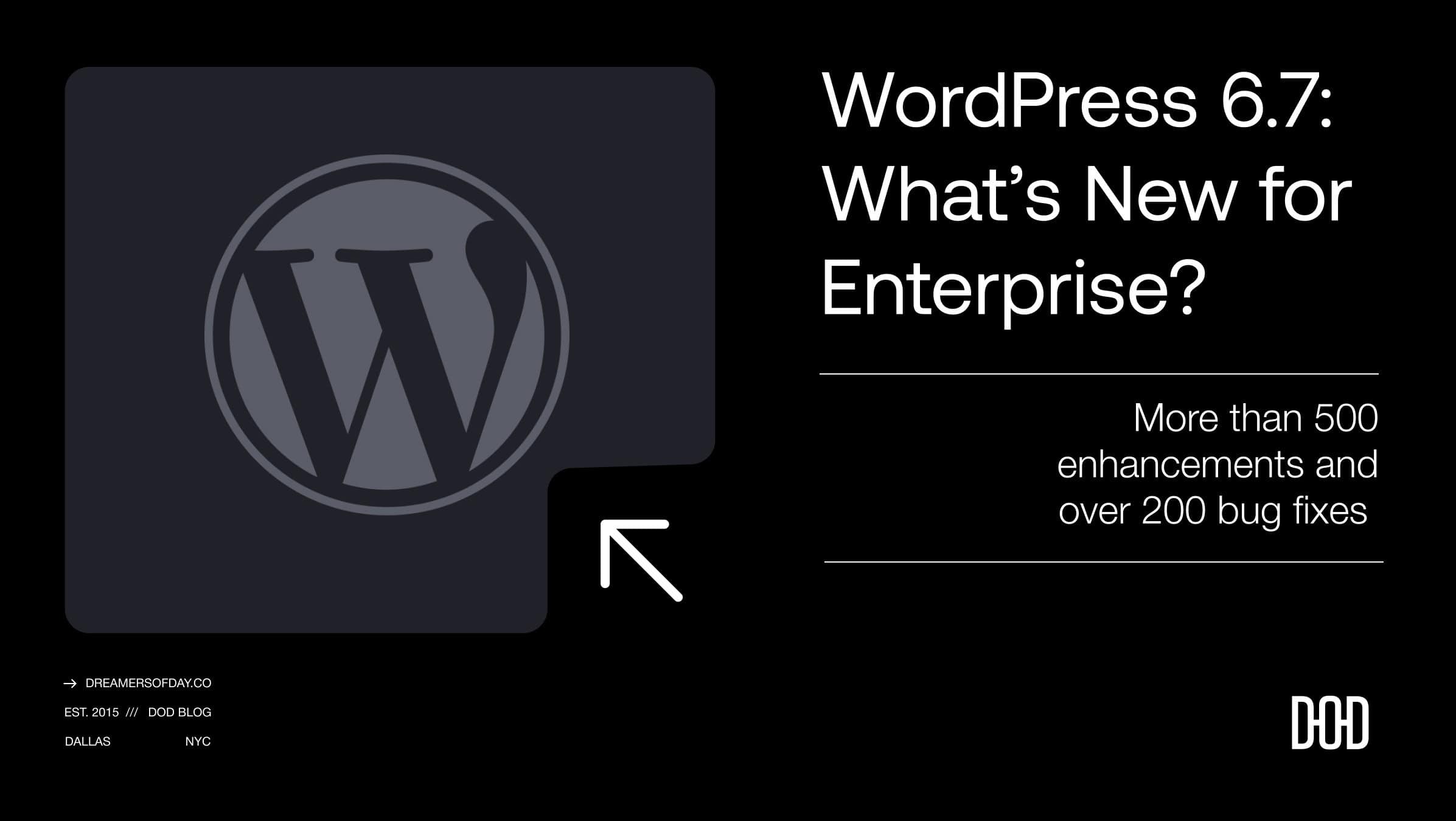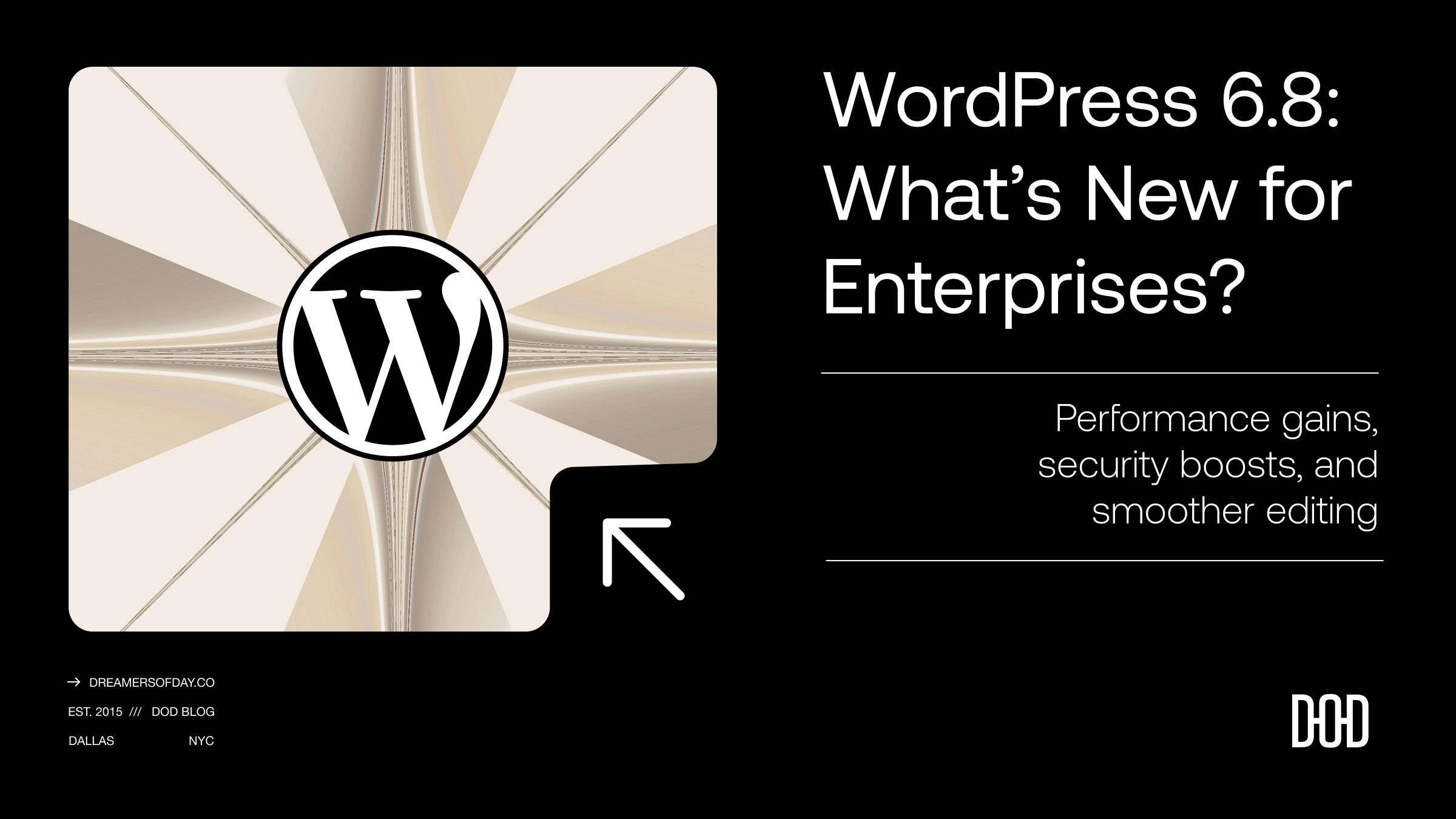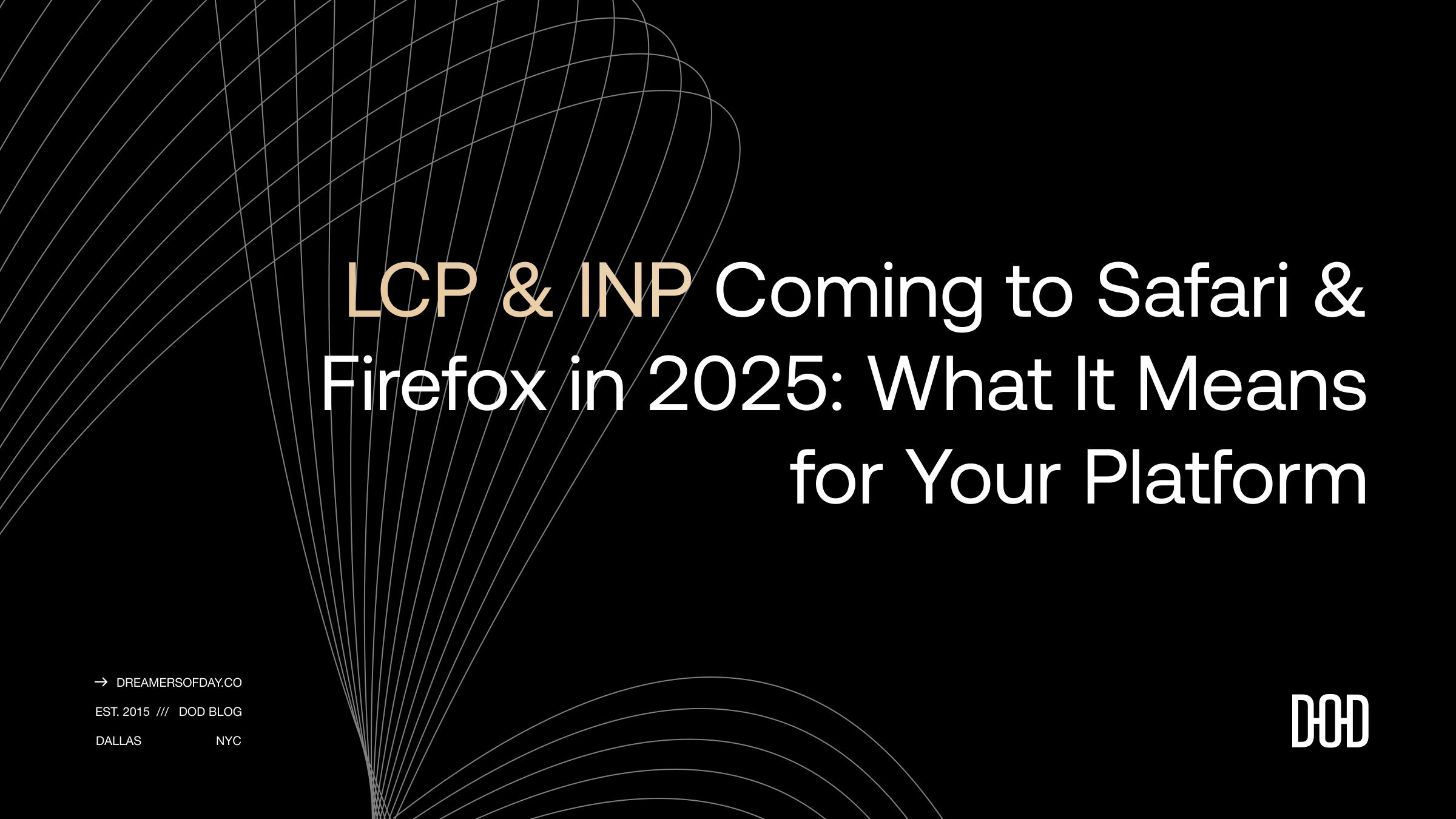WordPress 6.7: What’s New for Enterprises?

With the upcoming release of WordPress 6.7 on November 12, 2024, enterprise businesses can look forward to significant improvements in performance, usability, and scalability.
With more than 500 enhancements and over 200 bug fixes for the editor and Core, these features will help large website owners get more out of their WordPress sites. Let’s take a look at the key features and their benefits for enterprise leaders:
Refined Query Loop Block ∞
The Query Loop block is one of WordPress’s most powerful tools for dynamically displaying content such as blog posts, product listings, or event updates. It allows users to set up automated content loops that display items based on certain criteria, like categories or tags.
In WordPress 6.7, this block has been refined to automatically inherit queries from the template by default. This means that rather than needing to configure settings every time manually, the Query Loop block will pull the necessary data from the template, streamlining the process of displaying dynamic content.
Benefit: Teams no longer need to adjust settings for each content block, speeding up the process of building and updating content-heavy pages. This helps reduce potential errors, increases efficiency, and ensures a consistent user experience across the website.
Preview Options API 💡
The new Preview Options API enables developers to add custom preview settings directly within the WordPress editor. This feature allows users to visualize how their content will appear across different devices or layouts before hitting publish. Instead of relying solely on default views, developers can create tailored preview modes for specific content types or user scenarios.
Benefit: For enterprise-level websites that manage complex digital assets—whether it’s multi-device content, region-specific pages, or content with varying layouts—this API enhancement provides a way to ensure accuracy before publishing. By offering custom previews, marketing and content teams can verify that pages are optimized for all intended audiences, reducing the risk of errors and improving the overall quality of published content.
Font Library, Font Size Presets, and Fluid Typography 📕
6.7 enhances the Styles interface with a new Font Library, font size presets, and fluid typography, which adjusts text to different screen sizes.
Benefit: Enterprise businesses can now ensure consistent, responsive typography across all devices. This is particularly valuable for large organizations with extensive branding guidelines, as it allows for easy management of fonts and improves the user experience without compromising design standards.
Zoom Out View for Site Editing 🔎
The new Zoom-Out View feature allows users to edit page patterns on a broader scale, providing a high-level overview of the entire content layout.
Benefit: For companies managing complex, content-rich websites, this feature streamlines the editing process. It allows marketing, design, and content teams to make strategic layout decisions faster without navigating each individual block, improving workflow and reducing time spent on repetitive tasks.
Media File Improvements 🗂️
WordPress 6.7 introduces support for HEIC images, which are commonly used by Apple devices, automatically converting them to JPEG for better compatibility. Additionally, lazy loading (a technique in which you wait to load certain page elements until they are needed) for images has been enhanced to boost performance.
Benefit: Enterprises that rely heavily on high-quality media will benefit from these media improvements. HEIC support ensures seamless uploads from Apple devices, while lazy-loading improves site performance, optimizing the user experience and potentially search engine rankings.
Interactivity API Enhancements 👉
The Interactivity API will receive crucial updates that improve its ability to handle asynchronous tasks, making interactive elements more efficient and responsive. These improvements include features like lazy loading for interactive elements, which ensures that components are only loaded when needed, optimizing page performance, and reducing unnecessary load times.
Benefit: For enterprises running feature-rich, interactive websites, these enhancements provide a smoother user experience by reducing load times and improving responsiveness, even on complex pages with dynamic content. By optimizing how interactive elements are handled, businesses can ensure that high-traffic websites perform efficiently. The ability to handle asynchronous tasks more effectively also allows for better resource management, ensuring that key site functionalities remain fast and reliable under heavy load.
Block Library & Patterns 🧱
WordPress 6.7 brings multiple improvements to the Block Library, including support for background images in the Quote and Group blocks, easier social icon management, and background color support for the Buttons block.
Benefit: The expanded block features give enterprises more control over their website’s design, allowing for better brand expression without needing advanced coding skills. This enables marketing teams to make design updates in-house, saving both time and resources.
Refined Data Views 📈
In 6.7 we can expect improvements to the Refined Data Views feature, allowing users to more easily manage and organize content within table views. One of the key enhancements is the ability to reorder fields directly within the table, providing more flexibility in how content is displayed and interacted with. The new options also allow users to hide or show filters, customize column orders, and set grid layout densities for a more tailored experience.
Benefit: For enterprises managing large volumes of content or complex data sets, these enhancements improve workflow efficiency by offering more control over how data is visualized and manipulated. Content teams can quickly reorder fields to prioritize important data or customize views to suit specific operational needs. This ensures that managing extensive content libraries or product catalogs becomes faster and more intuitive, reducing time spent on manual adjustments and improving overall productivity.
Manage Block Bindings Directly 🔗
The Block Bindings API has been updated with a user interface (UI) that enables developers to manage custom fields and attributes within blocks, eliminating the need to manually code these connections. Developers can now visually select and link block attributes to metadata directly within the block editor, streamlining the development process.
Benefit: For enterprise organizations, this update reduces development complexity and speeds up the process of customizing blocks for specific business needs. By simplifying the management of custom fields and attributes, development teams can focus on creating more robust, tailored solutions without getting bogged down by intricate code. This means faster deployment of features, reduced reliance on specialized technical resources, and the ability to scale website functionality more efficiently.
Enhanced PHP 8.x Compatability 💪
WordPress 6.7 brings continued improvements for PHP 8.x compatibility, ensuring a more stable and efficient environment for websites running on the latest versions of PHP. This update includes the removal of deprecated code from older PHP versions, reducing potential errors and improving performance across the board.
Benefit: For enterprise-level organizations, staying compatible with the latest PHP versions is critical for maintaining site security, speed, and performance. With this update, businesses can ensure their digital infrastructure remains robust while minimizing downtime caused by outdated code or compatibility issues. The improvements also help future-proof the site, supporting long-term scalability and system reliability.
Streamlined Template Registration with New API 🧩
The new Template Registration API in WordPress 6.7 simplifies the process of programmatically registering templates and template parts for plugins and themes. Previously, developers had to rely on several filters to achieve this, but the new API reduces complexity and makes template management more efficient.
Benefit: For enterprise websites that rely heavily on custom templates, this API drastically reduces development time and simplifies site updates. Development teams can now manage templates more efficiently, ensuring quicker rollouts of new features or design changes. This streamlined process also improves the consistency and accuracy of templated pages, reducing the risk of errors and boosting overall site performance.
With these updates, WordPress 6.7 continues to position itself as a robust and scalable platform for enterprise sites. Whether your current focus is on performance, user experience, or content management, this release has a lot to offer.
For more information on how Dreamers of Day can help your organization leverage these updates, get in touch with us today.


